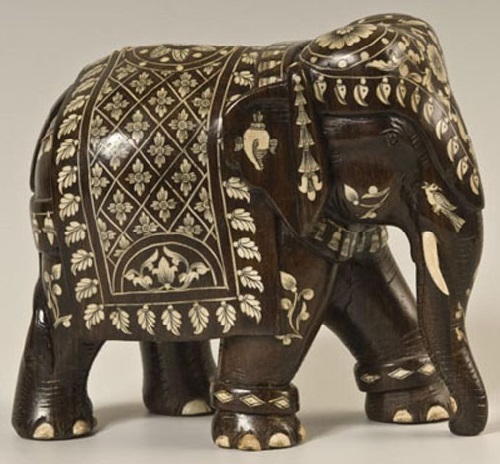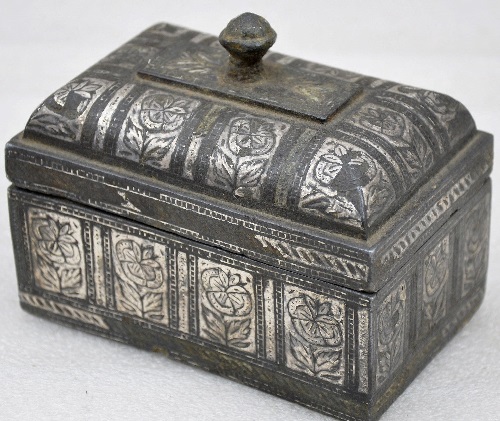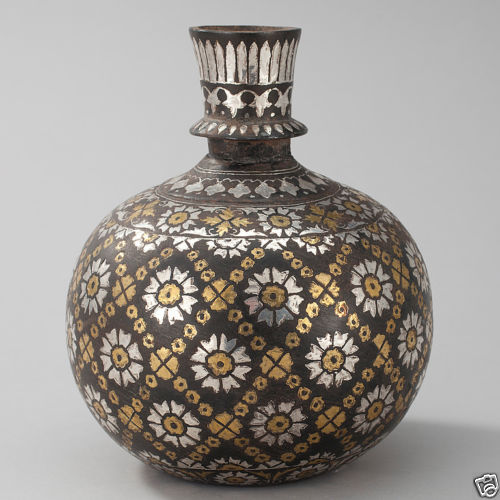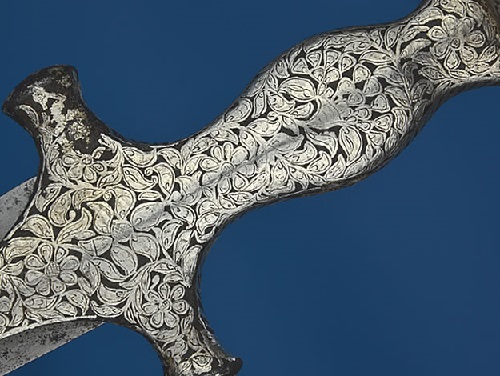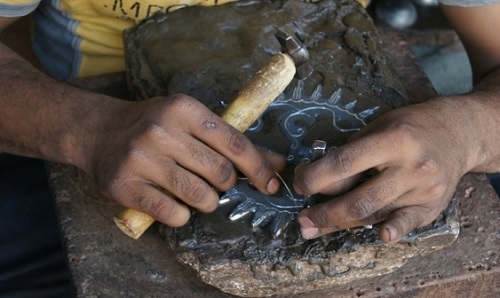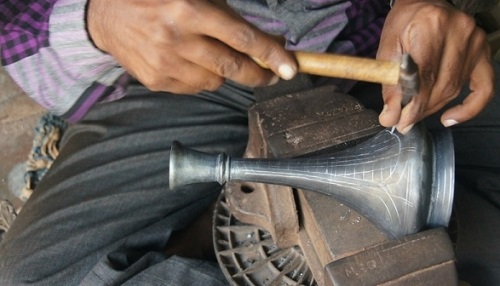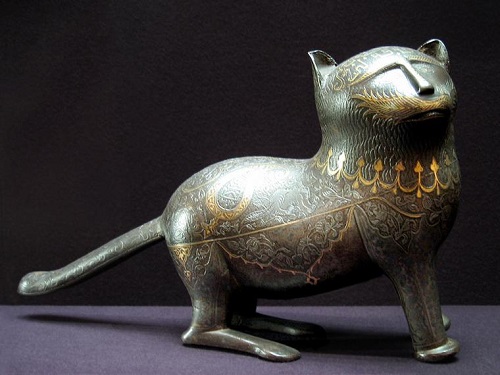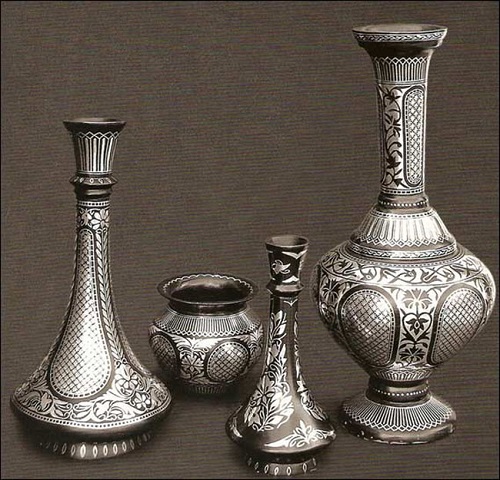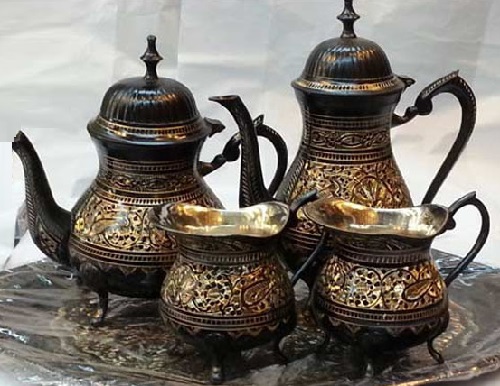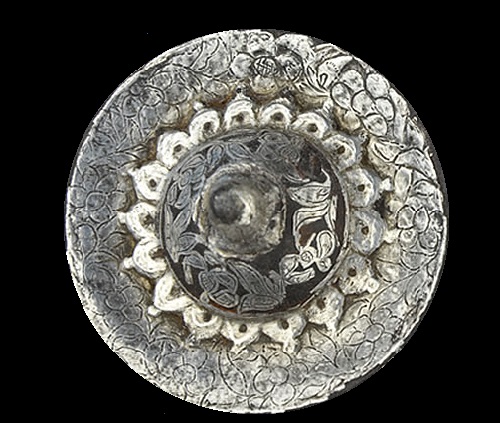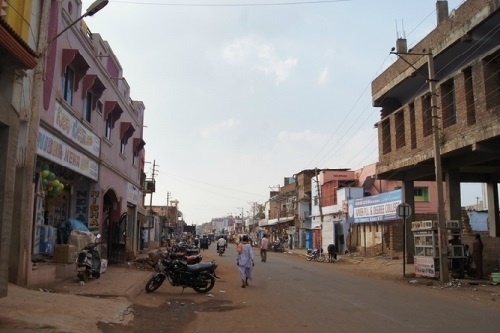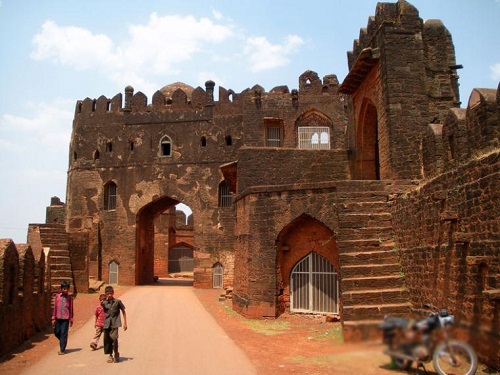Legend of Bidri art
Legend of Bidri art
“Bidri” is a traditional metal handicraft from Bidar, a city in India. Nowadays Bidar-ware – is not only a tradition, but also one of the crafts embodying this enigmatic country. The thing is that these products are made in only one place in India, in Bidar. The current Bidar – a mediocre Asian town with narrow streets and houses of one or two floors of mud brick. People just sleep in these houses, and only in the rainy season and during the cooler months. The rest of the time they spend in the crowded streets, doing housework, trading or just chatting with a neighbor at a cup of tea.

Brass and silver inlaid huqqa base, Deccan, late 17th-early 18th century. Sold for $ 15 thousand. Source – sothebys.com
Bidri Art was born seven centuries ago, when the Ahmad Shah Wali (1422-1436) drew to his new city skilled chasers from Iran led by outstanding artist of the time, craftsman, Abdullah-bin-Kais. Persian craftsmen brought to South India uncharacteristic for it designs and technology. And now, having absorbed the Indian traditions, appeared a new way of processing metal and silver inlay products – a wonderful Persian-Indian art “Bidri.”
Legend of Bidri art is as follows:
“Once there lived a poor master. Every day he went into the jungle and there carved wooden statues of saints. But this was done by almost everyone in the neighborhood, and a lot of money failed. One day, carving figures, he hurt his hand, and began to roll on the ground, weeping and wailing, that his family will die of hunger. Suddenly he heard a voice of sadhus – holy: “Do not grieve. I’ll tell you the secret of the material from which you’ll be able to make extraordinary things. But remember that your craft should be disinterested, this art you should not turn into a means of enrichment. You will live in abundance, but do not think about luxury. Pass a secret from father to son, but the work will be successful only as long as it will bring joy to people”.
Since then, the place where the master traded, was always full of people. People enthusiastically looked made of metal extraordinary figures of people, animals, decorations. Many come just to look at these figures and left some money – just like that. The master sold his creations for a very reasonable price.
This went on for many centuries. The eldest son inherited the passed secret of making an extraordinary material, and no other member of the family did not know it. But one of the masters who had five sons, tired of spending for the manufacture of one figurine several days. He discovered the secret to all the sons, and the work in the studio began. Father himself could only sit on the market and sell finished products. It seemed that the family is about to get rich. But people looked at the figures, or remained dissatisfied with the designated price. Then the four sons of the master died suddenly. Father then have up his craft, and just before his death told the remaining son of Covenant-breaking.
After his father’s death the son started working in the studio with the sunrise and finished at night. He did everything himself, and his figures again began to attract people. His creations accurately transmitted tension of body of a crouching tiger, grace of movement of a dancer, purity and innocence of a lotus flower. He sold only as much as needed to support himself and his wife, the rest gave away. His skill and hard work returned repute of “Bidri” craft.
Before his death the master revealed the secret to all masters of Bidar.
In our time, the material for “Bidri” is not a mystery. This is only an alloy of zinc and copper, zinc sixteen parts and one part – copper. Copper adds the plastic to preform better and easier polishing. Of the alloy are cast figurines and tableware. At first, they are gray in color. Then, copper sulfate acts on the cooled metal, thus black color is obtained. Then on the metal is scrapped a drawing or a pattern. Then gently working with a small hammer, hammered into these grooves silver thread, laying on a smooth surface silver pattern of a wondrous beauty.
It might seem surprising, but then begins the main miracle – the product is polished and rubbed with a paste made of Bidar ground. Yes, Bidar ground, and this is the main secret. The fact that the main active ingredient of the mixture of rich Bidar ground is nitrate as well as ammonium chloride and water. At the end of the process, the ready product is polished again, with a soft cloth soaked in coconut oil.
Legend of Bidri art
source
livemaster.ru/topic/1199449
